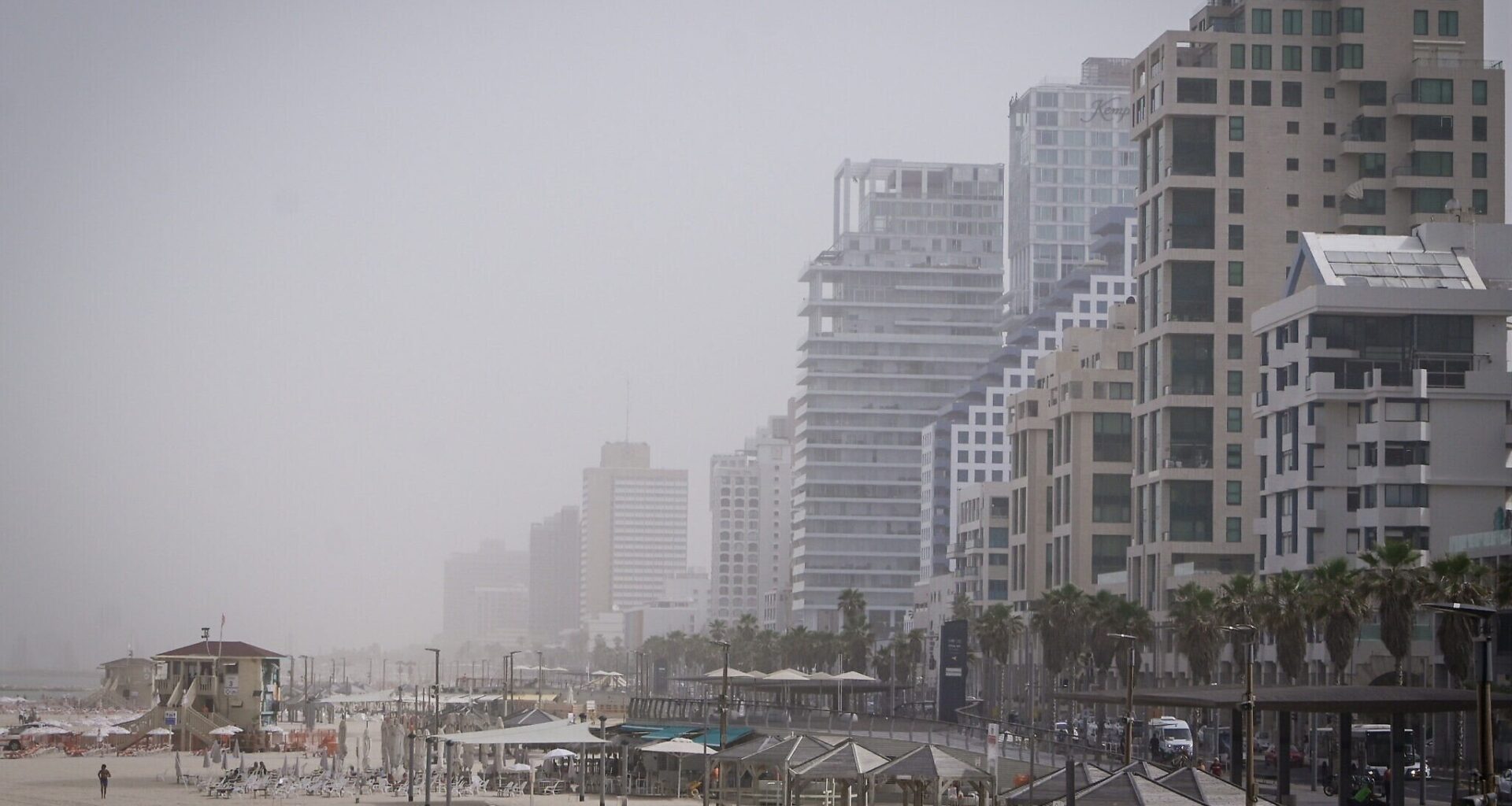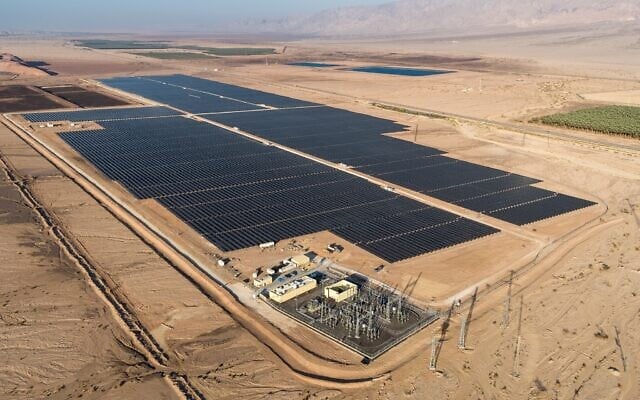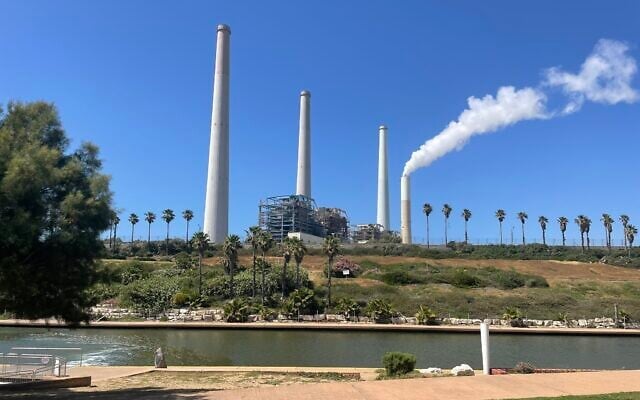Israel’s greenhouse gas emissions were almost the same last year as they were in 2015, the base year against which pledged reductions are supposed to be measured and relayed to the United Nations, according to a report released Thursday by the Environmental Protection Ministry.
The static figure sharply contrasts with the drops in emissions registered by other Western countries between 2015 and 2023, the most recent year for which international data is available. The UK recorded a decrease of just under 30 percent during that period, EU nations around 20% and the United States 10%.
The ministry’s report, which is issued annually, also showed that 85% of Israel’s electricity generation last year derived from fossil fuels, the highest among OECD countries.
Electricity production increased by 5% in 2024, largely to serve data centers and electric vehicles, with energy from renewable sources accounting for 14.7% of the electricity mix by the end of December.
The government intends to generate 19% of power from renewable sources by 2030, down from its original target of 30%, with emissions from electricity forecast to decline by 21% rather than the originally planned 30%.
Get The Times of Israel’s Daily Edition
by email and never miss our top stories
By signing up, you agree to the terms
A rise in renewable energy sources meant that last year, for the first time, there was no increase in the percentage of electricity generated from natural gas.
A new solar field in Timna, southern Israel, built by EDF Renewables Israel and formally opened on December 15, 2021. (EDF Renewables Israel)
The so-called Pollutant Release and Transfer Register and the National Inventory of Air Emissions, published yearly, are based on details about 74 types of activity reported to the Environmental Protection Ministry by 560 large enterprises in the energy, chemical, metal, food and beverage, and intensive farming sectors.
The ministry analyzes emissions to the air, water, and soil using the OECD’s methodology and calculates both pollutants and greenhouse gases, the latter of which drives climate change.
According to Thursday’s report, nitrogen oxides and sulfur oxides decreased by 13% and 7%, respectively, in 2024 compared to 2023, due to a decline in coal use for electricity generation.
That said, per capita nitrogen oxide rates were still higher than in 14 EU states.
The unrecognized Bedouin villages surrounding the industrial Ramat Hovav in southern Israel suffer from a high level of air pollution, as of December 28, 2017. (Yaniv Nadav/FLASH90)
Nitrous oxides, a subgroup of nitrogen oxides better known as laughing gas, contribute to acid rain and global warming, help cause or worsen respiratory diseases such as emphysema and bronchitis, and — when mixed with volatile organic compounds during periods of sunlight — form smog, which can damage the lungs of children, asthma sufferers, and people who work outside.
Around two-thirds of nitrous oxide emissions last year came from three facilities still using coal, with the Orot Rabin power station in central Israel’s Hadera far in the lead, followed by the Nesher cement factory in Ramle and the Rutenberg power station in southern Ashkelon.
Particulate matter (particles of pollution), which can cause everything from eye and throat irritation to increased risk of lung cancer, stroke, heart attack, and premature death, was also down, by 6%, thanks to improvements at the Rutenberg power station, the phosphates mines of ICL Rotem (formerly Rotem Amfert Negev), quarries, and landfills.
The partially coal-fired Orot Rabin power station in Hadera, central Israel, seen from the Hadera Stream National Park, April 25, 2025. (Sue Surkes/Times of Israel)
However, substances known or suspected to cause cancer in humans jumped by 16%, emanating chiefly from the illegal burning of municipal waste and open burning of agricultural waste. Israel has one of the highest concentrations of these substances in the air when compared with European states.
Meanwhile, activities at ICL Rotem and other industrial and landfill sites contributed to a 16% rise in Non-Methane Volatile Organic Compounds (NMVOC). These irritate the respiratory system, harm vegetation, and include toxic, cancer-causing chemicals such as benzene.
Landfill sites contributed to a 9% increase in methane emissions in 2024, while a slight rise in fossil fuel use resulted in a 0.2% increase in carbon dioxide emissions.
An Environmental Protection Ministry official, Avi Haim, told media on Wednesday that draft regulations to reduce methane emissions at landfill sites would be published for public comment later this year.
A view of Haifa Bay, April 24, 2018. (Yossi Zamir/Flash90)
The ongoing Gaza war, which began with the deadly Hamas terror attack on southern Israel on October 7, 2023, had several consequences, according to the report. These included a decline in shipping at Israeli ports, which led to a drop in related emissions by a third compared to 2023; a three-fold increase in forest fires, mainly close to the war-battered Lebanese border in northern Israel; a drop in the treatment of construction waste; and a 30% rise in emissions from fluorinated gases imported for cooling and used for emergency needs.
The effects of pollution on human health and the environment (known as externalities) cost the state NIS 37 billion ($11.1 billion) last year, which the ministry said was 2% lower than the previous year.
Together, transportation and electricity production were responsible for over half of these costs.
Responding to the report, the environmental advocacy NGO Adam Teva V’Din said 5,500 Israelis died annually from air pollution, more than from road accidents and wars.
Dr. Arye Vanger, the group’s chief scientist and an expert on energy and air pollution, said, “The environmental successes and improvements that existed until a few years ago are being eroded, and many indicators show a deterioration. The Environmental Protection Ministry and the minister who heads it need to come to their senses and begin taking vigorous action so that we can begin to see the trend reverse next year.”





